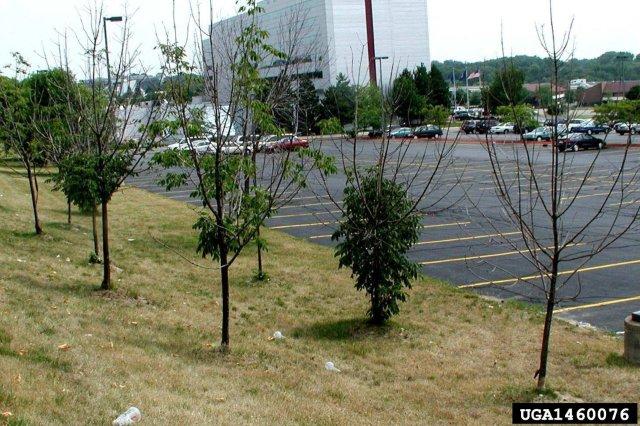My earlier post regarding plans to replace the monoculture of ash trees at the Gateway Arch Monument in St. Louis, MO with a monoculture of Lindens prompted a question about options for treating ash trees for emerald ash borer. This is a complex topic so I wanted make sure I had time and space to respond completely.
First, the best and most current source of information regarding treatments for EAB is the Multi-state bulletin “Insecticide Options for Protecting Ash Trees from Emerald Ash Borer” which is available as a full-color .pdf on the EmeraldAshBorer.info website. Anyone who lives in or near EAB-affected areas and is considering treating their ash trees should take the time to download and read this bulletin.
Here are some key points to consider if you want to save you ash:
It is possible to protect ash trees from EAB with insecticides. There are several examples in and around the original core infestation area in Detroit where arborists have successfully protected trees since EAB first was identified in 2002. There are two general options; protective cover sprays and systemic applications. For most trees, protective cover applications will require professional application with specialized high-pressure spray equipment. Most systemic application will also need to be applied by professional applicators, except for small trees that can be treated with soil drenches of systemic insecticide. To date, the most effective systemic product is emamectin benzoate, sold under the trade name TREE-äge. In various tests, emamectin has shown the highest level of control among products tested and is also the only product that consistently provides more than one year of control. Imidacloprid is also effective as a systemic but will need to be re-applied annually for the best level of control.
The likelihood of successfully treating an ash tree declines rapidly once trees begin to show noticeable crown-die-back. In certain cases, researchers have been able to save EAB-infested trees showing some crown die-back, but once 50% of the crown is affected the tree is likely a goner.
Once started, treatments will need to continue in perpetuity. To me, this is the biggest factor homeowners need to consider if they’re thinking about treating their ash trees. To the best of our knowledge, EAB is here to stay. EAB populations may begin to decline once most of the ash trees in a region have been wiped out, but trees in woodlots and forests that have been killed will continue to sprout, providing host material to maintain an endemic population of beetles for the foreseeable future. Systemic applications can provide control but the products will need to be re-applied every year (imidacloprid) or every other year (emamectin) to be effective.
Effectively treating trees larger than 4” in diameter will require applications by a certified pesticide applicator and may cost several hundred dollars per tree. Homeowners need to carefully consider the cost of on-going treatments versus removal and replacement.

Mention of trade names does not imply in endorsement. Read and follow label directions when applying pesticides.
I know a lot people in the ann arbor area are simply copiccing their Ash trees to protect them. The borers don’t both when they stay little and more like a bush. Has this been studied?